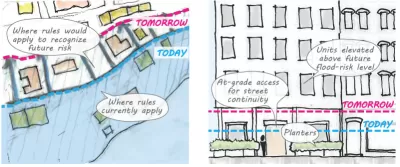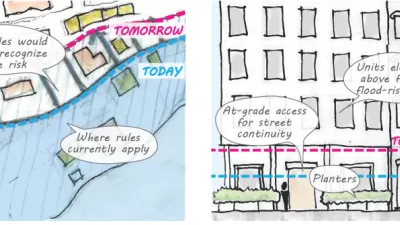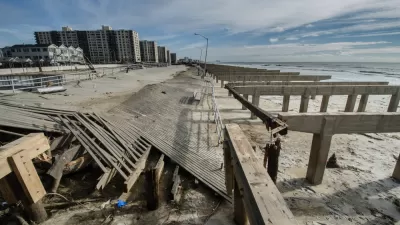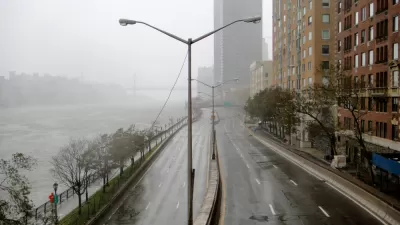With 520 miles of coastline, New York City is ready to implement the lessons of Hurricane Sandy in the zoning code for the entire city.

New York Department of City Planning is seeking public input on a citywide rezoning designed to improve resilience during flood events. The new zoning rules are proposed in the Zoning for Coastal Flood Resiliency (ZCFR) process, according to a press release from the Department of City Planning.
According to the ZCFR website, "Zoning for Coastal Flood Resiliency would improve homeowners’ and business owners’ ability to withstand and recover from future storms and other disaster events. It builds on years of collaboration with floodplain communities to support post-disaster recovery and promote long-term resiliency."
The zoning changes proposed by the ZCFR process would update temporary zoning changes implemented after Hurricane Sandy in 2012, according to the same web page.
"The proposal would allow homeowners, business owners, architects and others to design resilient buildings that are better protected from flood risk and reduce flood insurance costs. It would protect and support public access to waterfront sites through resilient open space design. It would also help New Yorkers recover quickly from other future disasters, including the COVID-19 crisis," according to the website.
New York City Planning Commission Chair Marisa Lago is quoted in the press release with the following soundbite: "This new zoning also provides needed flexibility to address all types of future disasters, whether another climate event or today’s COVID-19 pandemic."
"Currently, buildings are restricted by zoning regulations that do not take resiliency into account and thus force New Yorkers to choose between interior space and resiliency improvements. ZCFR will make it easier for buildings to meet or exceed modern resiliency codes without sacrificing their basement, for example, by adding some much-needed zoning flexibility," reads the press release.
In one crucial component of the rezoning, the changes would limit the construction of new nursing homes in areas of high flood risk.
FULL STORY: Making NYC More Resilient: Public Review Begins for DCP’s Important Zoning for Coastal Flood Resiliency

Alabama: Trump Terminates Settlements for Black Communities Harmed By Raw Sewage
Trump deemed the landmark civil rights agreement “illegal DEI and environmental justice policy.”

Planetizen Federal Action Tracker
A weekly monitor of how Trump’s orders and actions are impacting planners and planning in America.

Why Should We Subsidize Public Transportation?
Many public transit agencies face financial stress due to rising costs, declining fare revenue, and declining subsidies. Transit advocates must provide a strong business case for increasing public transit funding.

Understanding Road Diets
An explainer from Momentum highlights the advantages of reducing vehicle lanes in favor of more bike, transit, and pedestrian infrastructure.

New California Law Regulates Warehouse Pollution
A new law tightens building and emissions regulations for large distribution warehouses to mitigate air pollution and traffic in surrounding communities.

Phoenix Announces Opening Date for Light Rail Extension
The South Central extension will connect South Phoenix to downtown and other major hubs starting on June 7.
Urban Design for Planners 1: Software Tools
This six-course series explores essential urban design concepts using open source software and equips planners with the tools they need to participate fully in the urban design process.
Planning for Universal Design
Learn the tools for implementing Universal Design in planning regulations.
Caltrans
Smith Gee Studio
Institute for Housing and Urban Development Studies (IHS)
City of Grandview
Harvard GSD Executive Education
Toledo-Lucas County Plan Commissions
Salt Lake City
NYU Wagner Graduate School of Public Service





























